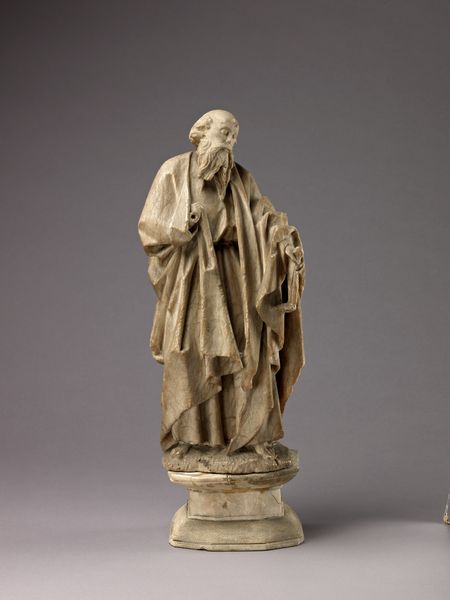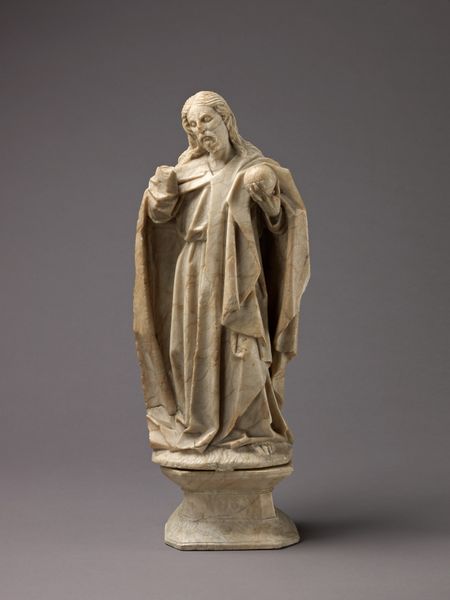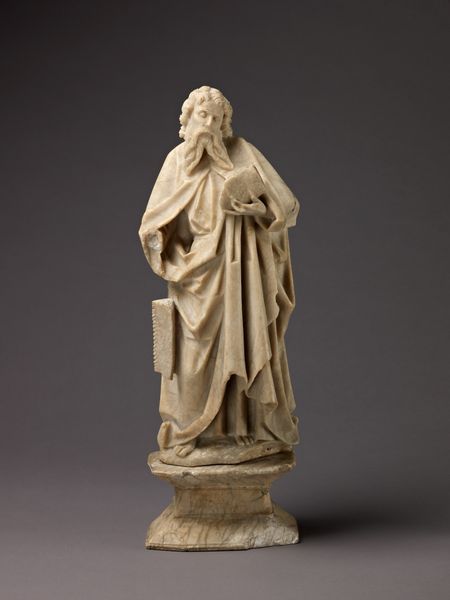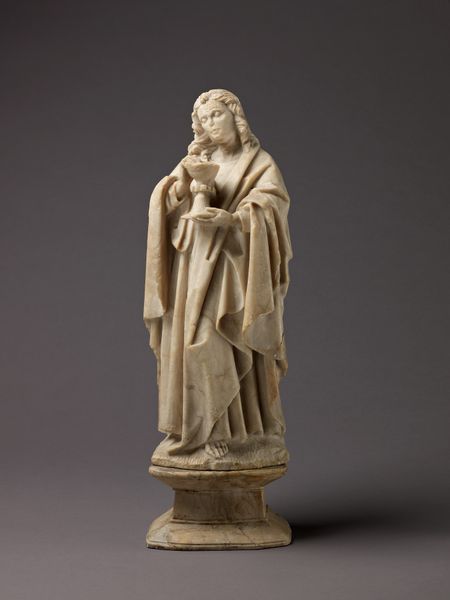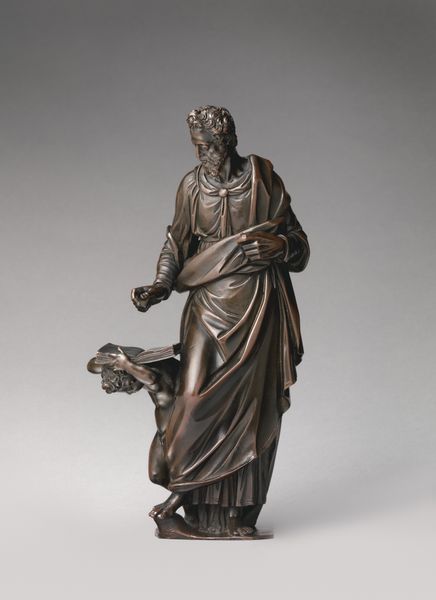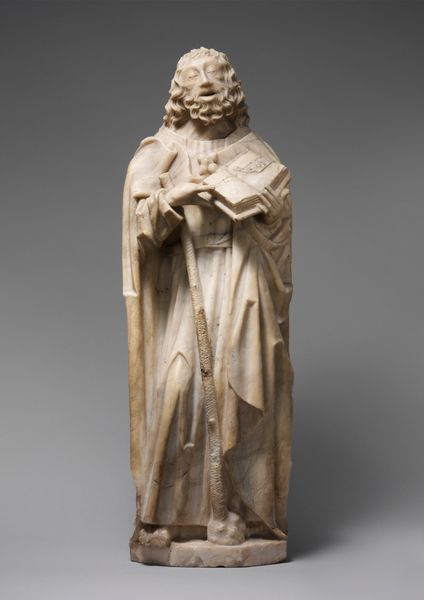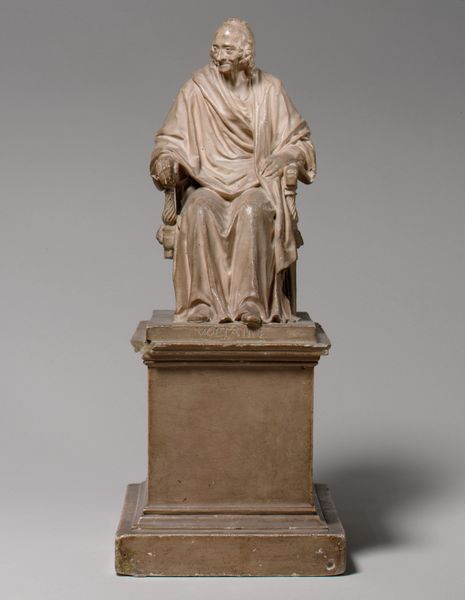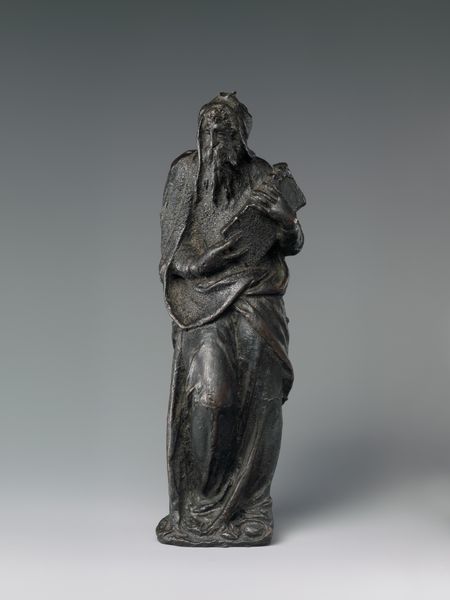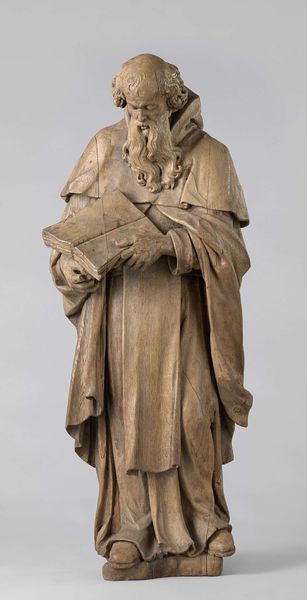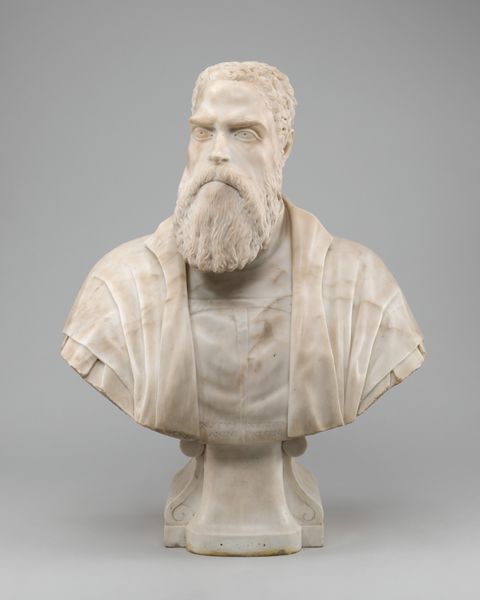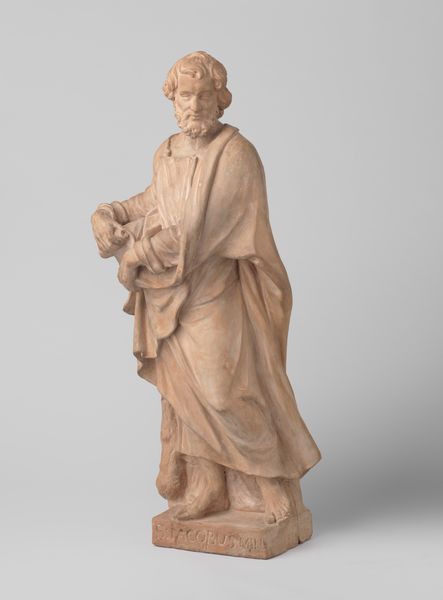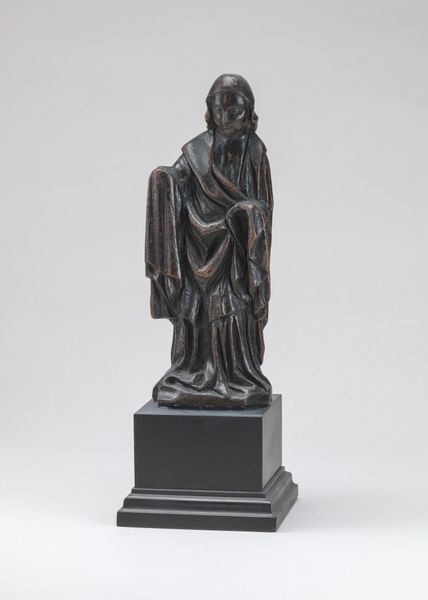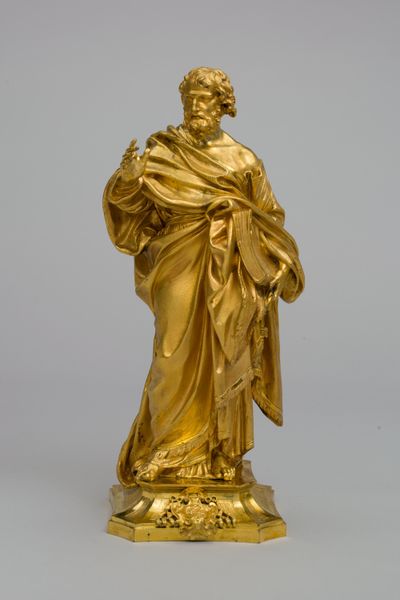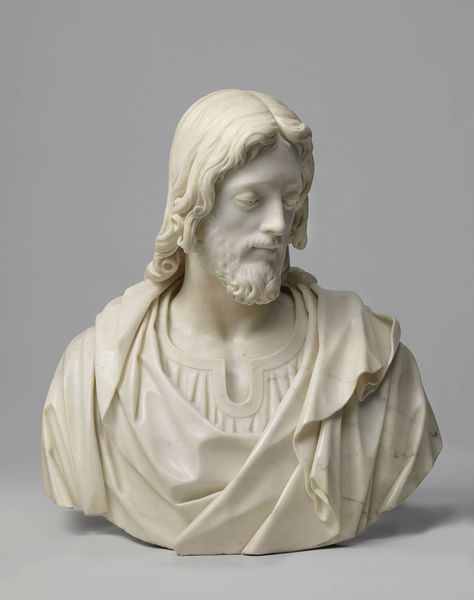
sculpture, wood
#
portrait
#
medieval
#
sculpture
#
figuration
#
sculpture
#
wood
#
medieval-art
Dimensions: Overall: 47 1/4 x 25 1/2 x 12 in. (120 x 64.8 x 30.5 cm)
Copyright: Public Domain
Curator: Today we’re examining a limewood sculpture of Saint Paul created by Claus de Werve between 1420 and 1430. It resides here at the Metropolitan Museum of Art. Editor: I must say, my first impression is of the sculpture's almost palpable gravity. There's a sense of solemnity etched into the very folds of his garments. The verticality is really emphasized. Curator: Let's consider the artistic labor that went into its creation. Carved from limewood, this piece would have required immense skill. Wood as a medium implies not just a material choice, but also the economic structures surrounding its procurement and the workshop practices in Burgundy at that time. Editor: Yes, but notice how de Werve uses the very properties of the wood to his advantage! The texture almost seems to amplify the emotional tenor, creating an almost direct relationship between the viewer and the spiritual gravitas of Paul. I mean look at that perfectly rendered beard, it exemplifies texture, and brings balance. Curator: Indeed, but think also of the function of the piece, and the ways workshops reproduced similar items for different locations. Did the labor mirror monastic practices of reading and copying sacred texts? Editor: While labor is indeed important, look at how the figure engages with contrapposto, with his weight subtly shifting. The play of light across the surface creates a mesmerizing effect. Don’t forget semiotics; the book Paul holds could easily be a direct link to his writings. Curator: Of course, but his writings have always been intertwined with material practice! Think about the Reformation era a century later and its emphasis on print. The circulation of theological material was just as crucial to evolving practices and doctrines as individual interpretations of color or line. Editor: Perhaps. But returning to form, do you notice the elongated proportions typical of Gothic sculpture? It guides your eye upward. The face expresses a profound humanity; a sense of both wisdom and sorrow. Curator: And considering the time during which it was made; after his master Sluter’s death, we begin to grasp de Werve’s own artistic struggle within a system of guilds and patronage. Editor: Very true. Each viewing is really rewarding and insightful! Curator: I agree. Examining not just the saint, but the making reveals even greater value.
Comments
No comments
Be the first to comment and join the conversation on the ultimate creative platform.
